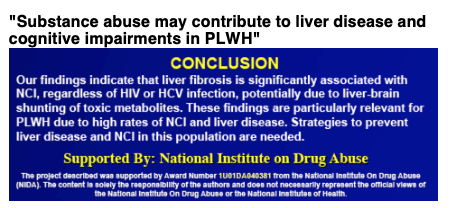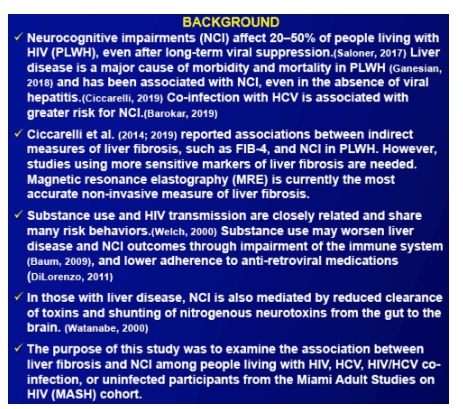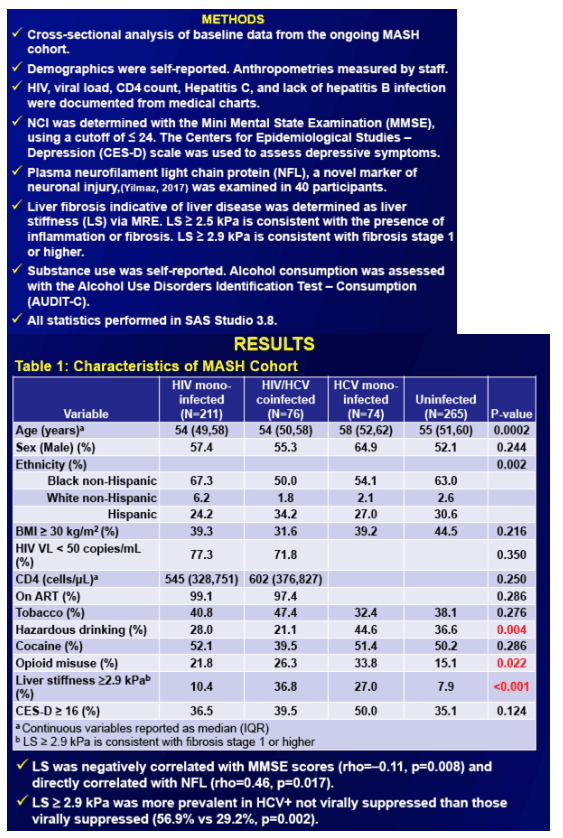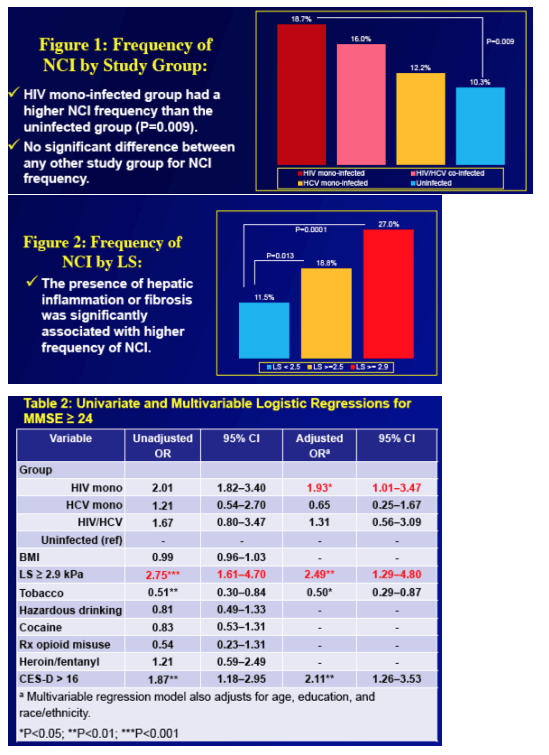 |
 |
 |
| |
Hepatic Fibrosis Determined with MRE Significantly
Predicts Cognitive Impairment
|
| |
| |
CROI 2020
Reported by Jules Levin
Baum MK1, TamargoJ1, EhmanRL2, Meade CS3, Sherman KE4, MeedsHL4, Chen J2, Martinez SS1, ZariniGG1, Huang Y1,
TeemanC1, Hernandez J1, Johnson A1, MandlerR5, CampaA1, for the MASH Team
1Florida International University, Miami, FL, USA 2Mayo Clinic, Rochester, MN, USA, 3 Duke University, Durham, NC, USA
4 University of Cincinnati, Cincinnati, OH, USA, 5 National Institute on Drug Abuse, Rockville, MD, USA

Abstract
Liver disease is a leading cause of morbidity and mortality among people living with HIV (PLWH), and has been associated with neurocognitive impairments (NCI) in PLWH, even in the absence of viral hepatitis. Yet, co-infection with HCV is associated with greater NCI irrespective of cirrhosis or substance abuse. Associations have been reported between indirect measures of liver fibrosis and NCI in PLWH. However, studies using more sensitive markers of liver fibrosis are needed. Magnetic resonance elastography (MRE) is currently the most accurate non-invasive measure of liver fibrosis.
Cross-sectional analysis of 211 HIV mono-infected (HIV+), 74 HCV mono-infected (HCV+), 76 HIV/HCV coinfected and 265 HIV/HCV uninfected individuals from the Miami Adult Studies on HIV (MASH) Cohort. NCI was determined with the Mini Mental State Examination (MMSE). Neurofilament light chain (NFL), a biomarker of neurodegeneration, was tested in plasma of 26 individuals. Substance use was assessed by questionnaire and urine drug screen. Liver fibrosis indicative of liver disease was determined as liver stiffness (LS) via MRE.
LS was negatively correlated with MMSE scores (rho=-0.11, p=0.008) and directly correlated with NFL (rho=0.46, p=0.017). LS >2.9 kPa (fibrosis) was more prevalent in HCV+ not virally suppressed than those virally suppressed (56.9% vs 29.2%, p=0.002). HCV infection was associated with 3.42 (1.97-5.94) and 1.72 (0.99-2.99) the odds for inflamed or fibrotic liver (LS >2.5 kPa) compared to HIV+ and uninfected participants, respectively (p<0.0001). HIV infection was associated with decreased odds for LS >2.5 kPa (adjusted OR 0.71 [0.46-1.08], p=0.007) compared to HIV/HCV uninfected individuals. In PLWH, use of prescription opioids increased the odds for inflamed or fibrotic liver (adjusted OR: 1.62 [0.80-3.24], p=0.008) compared to opioid non-users. Hepatic fibrosis was associated with an adjusted odds ratio of 2.43 (1.28-4.59, p=0.006) for NCI (MMSE 24) compared to no fibrosis. In PLWH, cocaine use increased the odds for NCI compared to non-use (adjusted OR: 1.32 [0.67-2.61], p=0.036).
Hepatic fibrosis is associated with NCI irrespective of HIV and/or HCV infection. Substance abuse may contribute to liver disease and cognitive impairments in PLWH. Longitudinal studies with comprehensive neuropsychological testing are needed.



|
| |
|
 |
 |
|
|